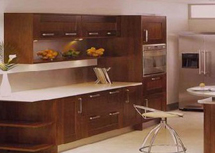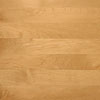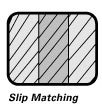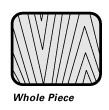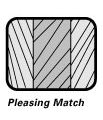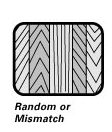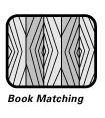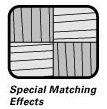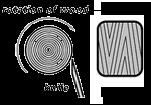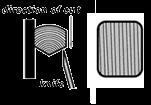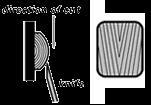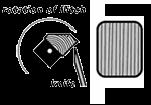Featured Products
Products
- Die Boards
- Curved Plywood
- HPL Plywood
- H20 Timber Beam
- Three Ply Shuttering Panel
- Window & Door Scantlings
- Carpet Grippers
- Floor Grating
Contact Us:
Email:
info@canex-group.com
Tel:86-22-88385862
Fax:86-22-88385863
Postal Address:
Chongqing Street 60#, Jinnan District Tianjin 300000, China
info@canex-group.com
Tel:86-22-88385862
Fax:86-22-88385863
Postal Address:
Chongqing Street 60#, Jinnan District Tianjin 300000, China
|
||||||
|
||||||
|
Technical Data:
Veneer Matching The arrangement of veneer comprising the panel’s face determines the visual effect that results. Different matching techniques are used for specific panel applications. |
||||||
|
||||||
|
Slip Matching: Adjacent veneer sheets are joined side-by-side, same sides up, for a uniform grain pattern. Whole Piece: A single piece of veneer is used with continuous grain characteristics running across the sheet. Pleasing Match: Veneers are matched by color similarity. Not necessarily grain characteristics. Random or Mismatch: Veneers intentionally do not match at the joints for a casual effect. Book Matching: Turns every other piece of adjacent veneer over, resulting in identical but opposite patterns. Special Matching Effects: Other arrangements of veneers, such as this checkerboard pattern, can be used to produce striking visual impact. |
||||||
|
HOW VENEER IS MANUFACTURED
|
||||||
|
Rotary Cut: A bold, sometimes wild, variegated figure. An undivided length of log is mounted in a manner that permits it to be turned on its long axis. While spinning, a razor-sharp knife, as long as or longer than the section of log, is slowly advanced toward the center of rotation. The veneer produced comes from the log as a continuous sheet. Much like paper being unwound from a roll. Rotary-cut veneer is primarily used in the manufacture of softwood plywood, and for applications where matching is unimportant. Hardwood veneer that may be rotary cut is usually limited to birch, maple, oak and ash.
Quarter Cut: Straight grain or ribbon-striped appearance. The cant is mounted on the slicer in a position that will cause the growth rings to strike the knife at an approximate right angle. The edge of the annual rings creates the lineal figure of the veneer. Oak species will also include flakes. (see Rift Cut). Only wood species with distinctive annual rings are quarter sliced, producing a consistent appearance throughout the flitch. Some popular quarter species cuts include mahogany, oak, anigre and zebra wood. Flat Cut & Plain Sliced: Also know as plain slicing and plain sawn. A variegated figure typified by straight grain mixed with swirls and cathedrals. Flat-cut veneer is produced by advancing a half log, mounted on a large steel rack that moves up and down and towards a stationary knife through a series or vertical, parallel cuts. Although grains variations will change from tree to tree, the designer can anticipate that the pattern will be somewhat similar. Flat-sliced veneer is moderately priced and commonly available in most wood species. Rift Cut: A straight grain effect similar to true quarter cut veneer. Oak trees contain characteristic growth features called medullary rays—cells radiating outward from the center of the tree, like the spokes of a wheel. If oak is quarter sliced, flakes result from cutting parallel to these rays (often seen in older furniture made from oak). To minimize the occurrence of these flakes, the cant is cut at an angle of 15 degrees off the quartered position. There are some other technical data for fancy plywood, if you interested, please leave messages or contact to us. |
||||||
